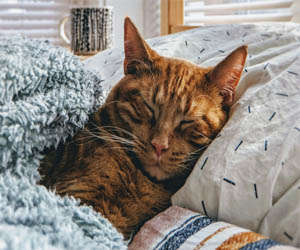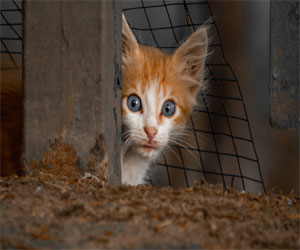



Dreams have always been a source of intrigue and mystery for humankind. We are transported to a realm where our imagination knows no bounds, and we experience a tapestry of emotions, places, and scenarios. For centuries, dream exploration techniques have allowed individuals to delve deeper into this enigmatic realm, unlocking its secrets, and even gaining control over their dream experiences.
Dream exploration techniques encompass various practices that aid in understanding, experiencing, and even manipulating the content of our dreams. These techniques offer a window into our subconscious and can be used for personal growth, creativity, and problem-solving. Here, we will explore some of the most effective and popular dream exploration techniques.
Dream Journaling: Keeping a dream journal is one of the most fundamental and accessible dream exploration techniques. As soon as you wake up, jot down all the details of your dream. Over time, patterns and recurring themes will emerge, giving you insight into your subconscious mind.
Reality Checks: This technique involves performing regular reality checks throughout the day to establish a habit of questioning whether you are awake or dreaming. This practice can carry over into your dream state, allowing you to become lucid and explore your dreams with awareness.
Meditation And Mindfulness: Practicing meditation and mindfulness during the day can enhance your ability to remember and explore dreams. These practices promote awareness and encourage a deeper connection with your inner thoughts and feelings.
Mnemonic Induction Of Lucid Dreams (MILD): MILD is a technique developed by Dr. Stephen LaBerge, a pioneer in lucid dream research. It involves setting a strong intention to remember your dreams and become lucid while repeating a specific mantra or affirmation as you fall asleep.
Wake-Back-To-Bed (WBTB): The WBTB technique involves waking up during the night and then going back to sleep with the intention of becoming lucid. This method takes advantage of the increased likelihood of entering a dream directly from the waking state.
Visualization: Before sleep, visualize your dream scenario or the type of dream you wish to have. This technique encourages your subconscious mind to construct dreams around your visualization.
Progressive Relaxation: Progressive muscle relaxation techniques help induce a calm and relaxed state before sleep, making it easier to enter the dream world with a clear and focused mind.
Dream Incubation: Dream incubation involves setting a specific question or problem you want to solve in your dreams before falling asleep. By focusing on the question, you are more likely to receive insights during your dreams.
Lucid Dream Induction Methods: Various methods, such as the Wake-Induced Lucid Dream (WILD) or the Mnemonic Induction of Lucid Dreams (MILD), can help individuals become aware and take control of their dream experiences.
Dream exploration techniques offer a pathway to a world of endless possibilities, where the boundaries of reality are limited only by the imagination. Whether you're looking to gain insights into your subconscious mind, overcome fears, or simply embark on a fantastical adventure, these techniques can be your gateway to the dream realm.
Remember that dream exploration is a personal journey, and the effectiveness of these techniques may vary from person to person. However, with patience and practice, you can unlock the secrets hidden within your dreams and embark on a fascinating adventure within the confines of your own mind. So, keep exploring and may your dreams be a source of inspiration and self-discovery.
Unraveling The Enigmatic Feline Nature
 2. Communication Through Body Language: Cats are skilled communicators, and their body language speaks volumes. Pay attention to their tail, ears, and whiskers, as these are indicators of their current mood. For example, a flicking tail may signify annoyance, while a content cat typically holds its tail upright.
2. Communication Through Body Language: Cats are skilled communicators, and their body language speaks volumes. Pay attention to their tail, ears, and whiskers, as these are indicators of their current mood. For example, a flicking tail may signify annoyance, while a content cat typically holds its tail upright.
3. The Language Of Purring: One of the most intriguing aspects of cat behavior is purring. Cats purr for various reasons: contentment, comfort, and even as a self-soothing mechanism. Understanding the context and accompanying body language can provide insights into the purpose of their purring.
4. Instinctual Behaviors: Cats retain many of their wild instincts, including hunting and territorial marking. Scratching furniture and kneading are instinctual behaviors, and providing outlets for these urges, like scratching posts, is crucial for a happy indoor cat.
5. The Night Owl Nature: Cats are crepuscular animals, which means they are most active during dawn and dusk. This natural behavior may explain why your cat seems most playful and energetic during these times. Creating a stimulating evening routine can help channel their energy positively.
6. Play Is Serious Business: Play is not just a source of entertainment for cats; it's also a way for them to hone their hunting skills. Engage your cat in interactive play with toys that mimic prey, which can satisfy their instincts and provide exercise.
7. Socialization And Territory: Cats are territorial animals. They may be wary of unfamiliar cats or even new people in their home. Proper socialization early in life and gradual introductions to new situations can help reduce stress and ensure a contented cat.
8. Grooming Rituals: Cats are meticulous groomers, not only to stay clean but also to bond with other cats or humans.
A Guide To Feline Bliss
 2. The Perfect Nap
2. The Perfect Nap
Cats have mastered the art of napping, and it's a vital ingredient in their happiness. On average, cats sleep 12-16 hours a day, and some even more. These catnaps rejuvenate their energy levels and keep them alert when they're active. Providing a cozy, quiet spot for your cat to rest is essential for their well-being and happiness.
3. Playtime And Stimulation
Cats are playful creatures, and engaging in interactive play is crucial for their happiness. Toys, feather wands, laser pointers, and puzzles all contribute to mental and physical stimulation. Playtime satisfies their natural hunting instincts and provides them with the joy of chasing and pouncing.
4. Grooming And Hygiene
A cat's secret to happiness lies in their meticulous grooming routine. Regular self-grooming keeps their fur clean and helps regulate their body temperature. As cat guardians, we can aid in their happiness by providing the occasional brush to reduce shedding and prevent matting.
5. The Magic Of Purring
The sound of a cat's purring is often associated with contentment and relaxation. Cats purr when they're comfortable, happy, and even when they're in pain, as a self-soothing mechanism. Understanding and responding to their purring can enhance their happiness.
 One of the key aspects that make Nostradamus' prophecies relevant in modern times is the ambiguity of his verses. His quatrains are famously cryptic, written in a way that allows for multiple interpretations. This vagueness has enabled enthusiasts to find connections between his writings and various significant events or trends.
One of the key aspects that make Nostradamus' prophecies relevant in modern times is the ambiguity of his verses. His quatrains are famously cryptic, written in a way that allows for multiple interpretations. This vagueness has enabled enthusiasts to find connections between his writings and various significant events or trends.
Some interpretations suggest that Nostradamus may have foreseen modern technological advancements. Quatrain 1 from Century 6 has been associated with the development of technology:
"When those of the arctic pole are united together,
Great terror and fear in the East:
Newly elected, the great trembling supported,
Rhodes, Byzantium stained with Barbarian blood."
While the mention of the "arctic pole" and "East" may not directly point to technology, some have interpreted this quatrain as a reference to geopolitical shifts and the global distribution of power. In the modern world, technological advancements play a pivotal role in shaping global politics and alliances, which is reflected in Nostradamus' writings, albeit indirectly.
Another modern interpretation of Nostradamus' predictions involves climate change. While Nostradamus did not explicitly mention this issue, some enthusiasts have drawn parallels between his quatrains and the environmental challenges faced in the 21st century. Quatrain 2 from Century 1 is one example:
"The trembling of the earth at Mortara,
The tin islands of St. George half sunk;
Drowsy with peace, war will arise,
At Easter in the temple abysses opened."
A Positive Approach To Obedience And Behavior
 Principles Of Reward-Based Dog Training
Principles Of Reward-Based Dog Training
Positive Reinforcement: Reward-based training revolves around positive reinforcement. This means that dogs are rewarded immediately for exhibiting desired behaviors. Whether it's sitting on command, coming when called, or any other action you want to reinforce, a reward follows to encourage repetition.
Timing Is Key: Timing is crucial in reward-based training. The reward must be given promptly, typically within seconds of the desired behavior occurring. This ensures that the dog associates the action with the reward.
Consistency: Consistency is vital in this training method. Everyone in the dog's life, from family members to caregivers, should follow the same rules and use the same commands to avoid confusion.
Clear Communication: Reward-based training requires clear communication between the dog and the trainer. Verbal cues, hand signals, or clickers are used to signal the desired behavior. These cues are followed by a reward when the dog complies.
Benefits Of Reward-Based Dog Training
Promotes Positive Behavior: Reward-based training encourages good behavior and helps dogs understand what is expected of them. It promotes a willingness to please and cooperation.
Strong Bond: This training method fosters a strong bond between the dog and the trainer. Dogs associate training with positive experiences and look forward to working with their owners.
Reduces Stress And Fear: Reward-based training is a gentle approach that minimizes stress and fear in dogs. It doesn't involve harsh punishments or intimidation, making it a less anxiety-inducing experience for your pet.
 Territorial Aggression: Cats are territorial animals, and they may become aggressive when they perceive an intrusion into their space. This type of aggression is often triggered by other cats.
Territorial Aggression: Cats are territorial animals, and they may become aggressive when they perceive an intrusion into their space. This type of aggression is often triggered by other cats.
Play Aggression: Kittens and young cats frequently engage in play aggression, which involves pouncing, biting, and scratching. While it may seem playful, it can escalate if not managed properly.
Redirected Aggression: This occurs when a cat becomes agitated by a stimulus (e.g., another cat outside the window) and then redirects its aggression onto a nearby person or pet.
Pain-Related Aggression: Cats in pain may exhibit aggression as a defensive response. It's essential to rule out any underlying medical issues in cases of sudden aggression.
Understanding The Causes:
To address cat aggression effectively, it's essential to identify the root causes. Common contributing factors include: